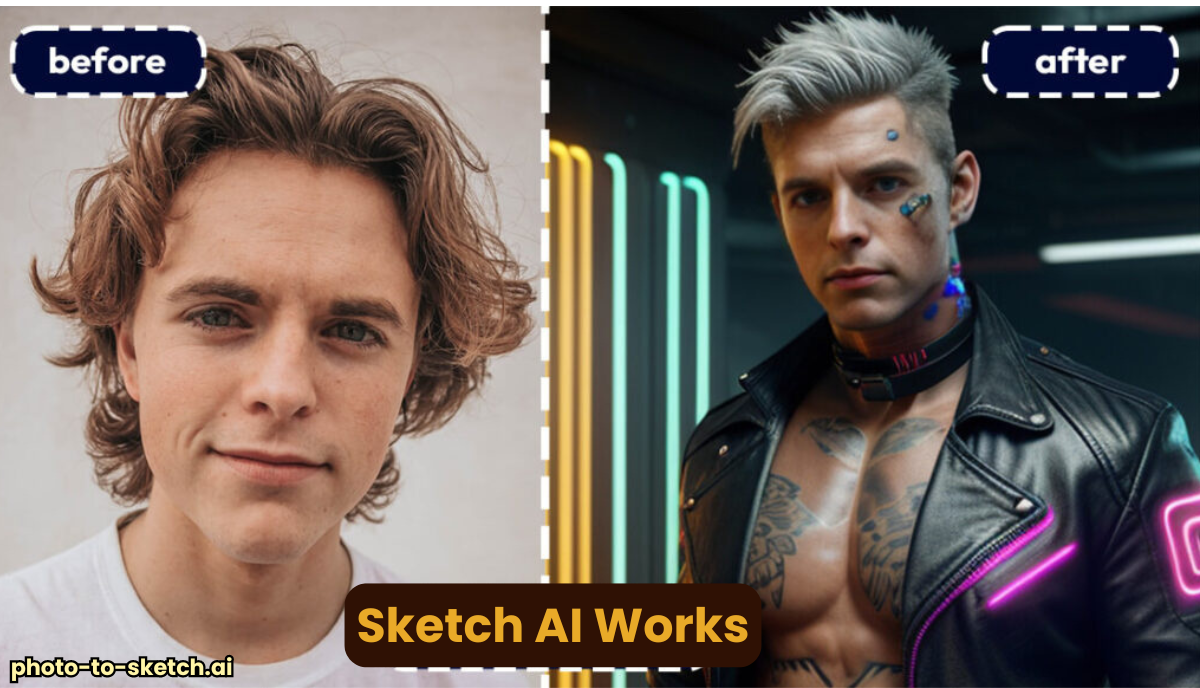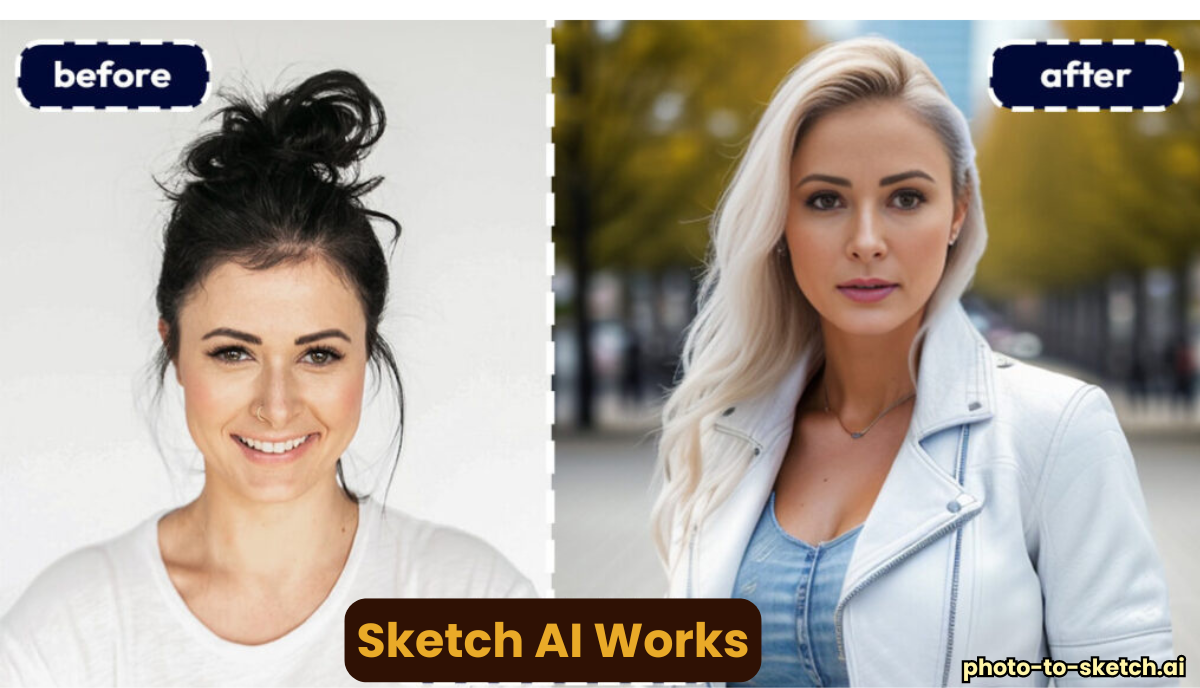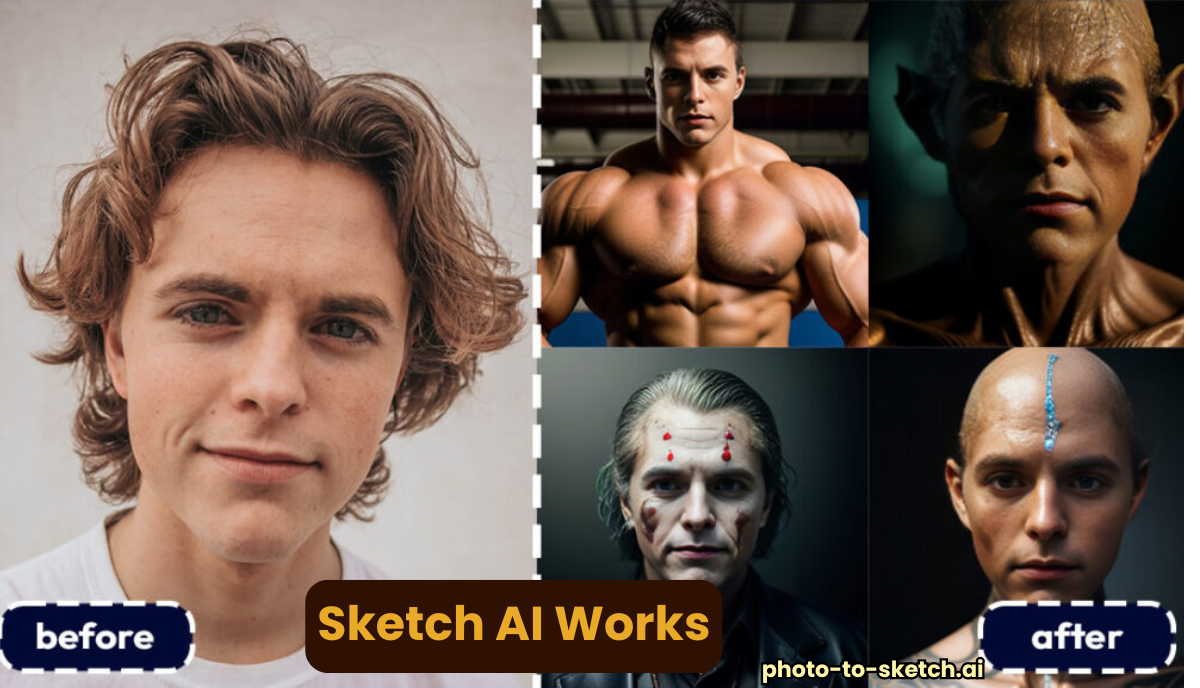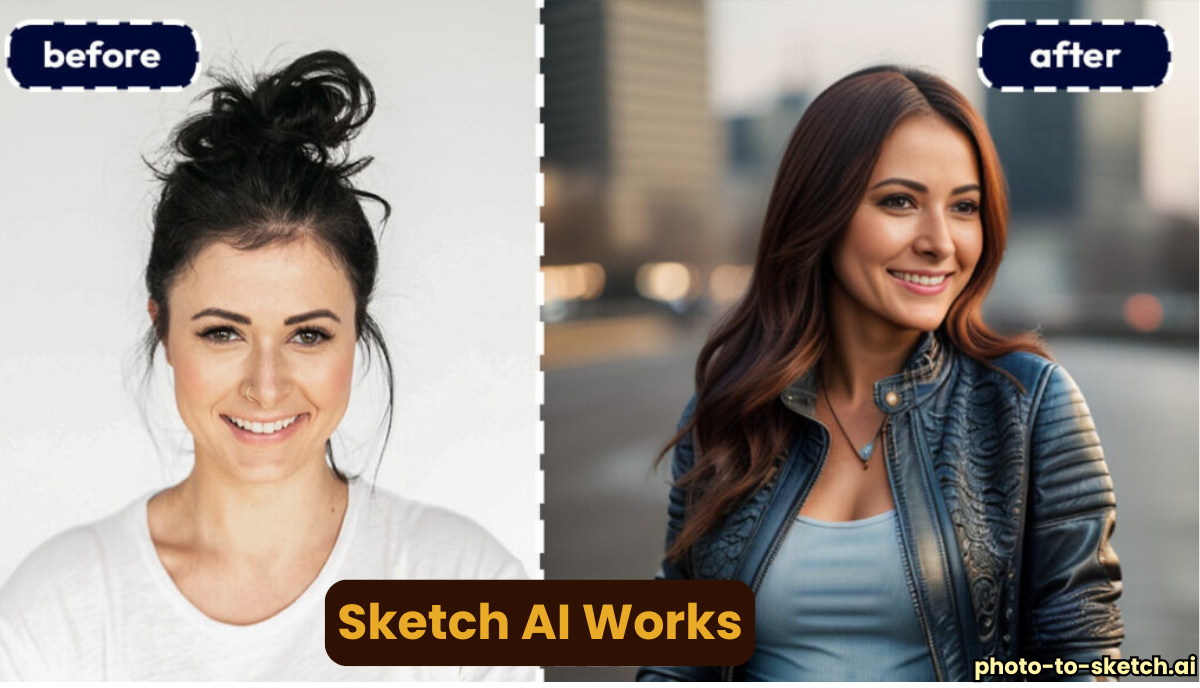In this article, we will discuss “How Photo to Sketch AI Works: A Deep Dive into the Technology”. Photo to sketch AI is a fascinating field that has captured the imagination of artists and tech enthusiasts alike.
Transforming a photo into a sketch may seem like magic, but it’s a clever blend of computer vision, machine learning, and artistic principles. This article delves into the inner workings of photo to sketch AI, exploring the techniques used, the challenges faced, and the exciting possibilities it holds.
How Photo to Sketch AI Works
Here is the some details about “How Photo to Sketch AI Works: A Deep Dive into the Technology” and for more details visit.

The Technology behind the Transformation
The journey from photo to sketch involves several intricate steps, each driven by sophisticated algorithms and models. Let’s break down this process:
- Image Preprocessing: The input photo is prepared for the transformation. This includes resizing, noise reduction, and sometimes adjusting contrast and brightness to optimize the results.
- Edge Detection: One of the fundamental steps is identifying the edges within the image. This is often achieved through algorithms like Canny Edge Detection, which highlight the boundaries between different objects and regions.
- Line Extraction: The detected edges are refined into lines that form the basis of the sketch. This involves discarding unnecessary details and emphasizing the essential contours.
- Stylization: This is where the artistic touch comes in. AI models can be trained on various sketch styles (e.g., pencil, charcoal, pen and ink) to emulate those aesthetics. This is often done using neural networks that learn the patterns and textures associated with different styles.
- Tone and Shading: To add depth and dimension to the sketch, AI models can apply shading techniques. This involves analyzing the original image’s light and shadow patterns and replicating them in the sketch using varying line density or cross-hatching.
Popular Techniques Used in Photo to Sketch AI
Several techniques are employed to achieve impressive photo to sketch conversions:
- Convolution Neural Networks (CNNs): These are powerful tools for image analysis. They can learn to recognize patterns in images and are often used for edge detection and style transfer.
- Generative Adversarial Networks (GANs): GANs consist of two networks, a generator, and a discriminator, that compete against each other. The generator tries to create sketches that fool the discriminator into thinking they are real, leading to increasingly realistic results.
- Image Segmentation: This technique involves dividing the image into distinct regions, such as foreground and background. This helps the AI model apply different styles to different parts of the image, leading to more accurate and artistic results.

Advanced Techniques: GANs and Style Transfer
While traditional CNNs can perform basic photo to sketch conversion, advanced techniques like Generative Adversarial Networks (GANs) and Neural Style Transfer have significantly enhanced the quality and realism of the sketches.
- Generative Adversarial Networks (GANs): GANs consist of two neural networks—the generator and the discriminator—that compete against each other. The generator creates sketches from photos, while the discriminator evaluates the authenticity of these sketches. Through this inimical process, the creator improves its capability to produce realistic sketches.
- Generator: This network attempts to create sketches that are indistinguishable from real ones. It takes a photo as input and outputs a sketch.
- Discriminator: This network differentiates between real sketches and those produced by the generator. Its feedback helps the generator improve.
- Neural Style Transfer: This technique involves separating and recombining the content of a photo with the style of a sketch. A pre-trained network, such as VGG, extracts content and style representations from images. By optimizing a combined loss function that balances content and style, the network generates a sketch that maintains the photo’s structure but adopts the stylistic elements of a sketch.

The Exciting Possibilities
Despite the challenges, photo to sketch AI is a field brimming with potential:
- Artistic Exploration: Artists can use AI tools to experiment with different styles and techniques, expanding their creative horizons.
- Customization: AI models can be fine-tuned to create personalized sketches, catering to individual preferences and artistic visions.
- Education: Photo to sketch AI can be used as a learning tool for aspiring artists, helping them understand the fundamentals of sketching and shading.
- Accessibility: AI-powered tools can make sketching accessible to a wider audience, including those without formal art training.
Future Directions
The future of Photo to Sketch AI is promising, with ongoing research focusing on improving the realism, efficiency, and versatility of these models. Some potential future directions include:
- Improved Training Techniques: Incorporating more sophisticated training techniques, such as semi-supervised learning or reinforcement learning, could enhance the performance of Photo to Sketch AI, especially in scenarios with limited data.
- Real-Time Processing: Enhancing the efficiency of these models to enable real-time photo to sketch conversion on consumer devices is a key area of research. Techniques like model quantization and edge computing could play a significant role in achieving this.
- Cross-Domain Applications: Extending the capabilities of Photo to Sketch AI to other domains, such as converting photos to paintings or 3D models, could open up new creative possibilities.
- Personalization: Allowing users to customize the style and characteristics of the generated sketches based on personal preferences or specific artistic styles could make these tools more versatile and user-friendly.
- Integration with Other AI Technologies: Combining Photo to Sketch AI with other AI technologies, such as natural language processing, could enable new applications, such as automatically generating illustrations for textual descriptions or creating interactive art experiences.

Conclusion
Here we explained “How Photo to Sketch AI Works: A Deep Dive into the Technology”. Photo to sketch AI is a testament to the power of combining human creativity with cutting-edge technology. As research progresses and algorithms improve, we can expect even more impressive results in the future. Whether you’re an artist seeking inspiration or a tech enthusiast fascinated by the possibilities, photo to sketch AI offers a glimpse into a world where art and technology seamlessly intertwine.
FAQs
- What are the different styles of sketches that AI can produce?
AI-powered photo to sketch tools offer a variety of styles, including pencil sketches, charcoal drawings, pen and ink illustrations, and even watercolor paintings. Some tools even allow you to customize the level of detail and shading.
- Can AI accurately capture the emotions in a photo when converting it to a sketch?
AI is getting better at recognizing and translating emotions, but it’s still a challenging task. While AI can identify basic expressions, it might struggle with subtle nuances and complex emotions. However, ongoing research in this area promises improvements in the future.
- Can I use photo to sketch AI for commercial purposes?
The usage rights for AI-generated sketches can vary depending on the specific tool or platform you use. Some tools offer free usage for personal projects, while others might require a license for commercial use. It’s important to read the terms and conditions of the tool before using the sketches for commercial purposes.
